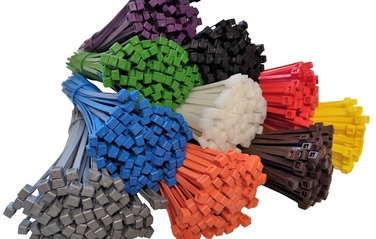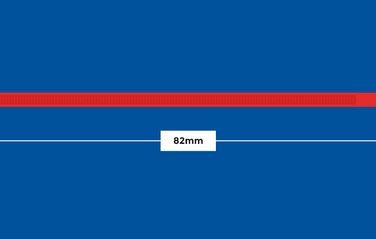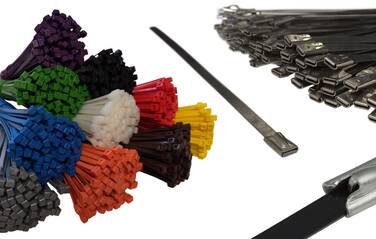Originally developed for cable management in the aerospace industry, today cable ties have an important role to play in electrical cable identification.
Why is cable identification so important?
Cable identification is a crucial step in any electrical wiring application to ensure the safety of everyone involved. When wires are not labelled or are incorrectly labelled, and are subsequently cut or unplugged in error, there is a risk of electrocution and/or fire.
Installation efficiency and productivity also relies on correct cable identification. When an electrician is dealing with a power outage and needs to identify which wire could be the cause, correctly labelled wiring makes his job easier and less time consuming, which will lead to a faster solution enabling the system to return to normal in the shortest time.
Choosing the appropriate method of cable identification for the job will make the task quick and easy.
Methods of cable identification
Phase marking cable ties – our phase marking cable ties are printed using the hot foil method, resulting in a highly visible and indelible print. Cables can be identified quickly and the identification will not wear away. Phase marking cable ties are available with L, L1, L2, L3 for identification of live wires, and N for neutral wires. These enable easy identification of neutral and live wires in single-phase and multi-phase electrical installations. The durable cable ties allow electricians to identify cables during installation, repair and inspection and are available in industry-approved colours. All variants are fully compliant with industry standards and approved by UK energy companies.
Heat shrink tubing - heat shrink tubing is a highly effective solution for wire and cable identification and labelling. The tubes are placed over the cable and will shrink down at a ratio of 2:1 or 3:1 when heat is applied with a heat gun. A heat shrink ratio of 2:1 means the tubing will shrink down to half its original size, while a ratio of 3:1 means it will shrink to one-third of its original size. The cables are secured without the need for adhesive and all heat shrink tubing conforms to UL-224 standards. When choosing heat shrink tubing, select an inner diameter measurement that gives a 20-30% allowance - this will give the necessary space for the tubing to merge with the cable tightly. Note also that once heat is applied to the tubing, its length will reduce by 5-7% so always choose longer than the job needs. Adhesive lined heat shrink tubing is also available which has an inner layer of adhesive. When heat is applied, the adhesive flows to fill any voids and will mould itself to the contour of the wiring. Once cooled, the shrink will act as an environmental seal, protecting the cable from moisture.
Electrical tape – used for grouping wires together and for insulating wires, electrical tape is the perfect product for differentiating electrical cables for identification. In the UK, electrical tape is colour coded for specific uses thus: red tape identifies low voltage phase A, yellow is low voltage phase B, blue tape is low voltage phase C, green tape signifies earth, and black tape is used for insulation/low voltage or neutral.
Caution Electric Cable Below tape – manufactured from high impact virgin polyethylene, the caution tape is brightly coloured making it visible during any type of excavation work. With a high tensile strength, the tape is non-toxic and will not degrade while protecting electrical cables below the soil.
Whatever the size of installation or domestic electrical project you are carrying out, our staff is always available to help and advise on the best methods for cable identification. Simply call us on 01623 706241 or email sales@cableties-online.co.uk








